#biblical stories
Text




Elizabeth Hurley as Delilah in Samson and Delilah, 1996
#elizabeth hurley#samson and delilah#delilah#biblical stories#bible story#movies#movie gifs#gifset#my gifs#gif edit#gifs#actress#aesthetic
17 notes
·
View notes
Text
This is "the horns of Jericho" song.. Val's parts only . From the play the ten commandments.. This is the second production
Finally managed to get it to work .. Merged and compressed the sh!t out of it
Here's the other version for the Adam lambert fans
youtube
Credit : screen ocean, youtube
#val kilmer#the ten commandments#The musical#The whole show is on youtube#Play#Adam lambert#Moses#Second time Val plays Moses#the prince of egypt#Val sings#my vid edit#Rameses#Miriam#Joshua#Aaron#Exodus#Biblical stories#youtube#Screen ocean#Song#The horns of Jericho#Val's silky voice#Enjoy#Adam is a nice addition
60 notes
·
View notes
Text
I've done this once or twice now, so I'm willing to give it another shot—
I'm looking to start up a small roleplay group. Ideally, between five and nine individuals. Some need to know things mechanic wise:
The roleplay group will be run like a tabletop roleplay game [ttrpg].
It will be played very similar to Dungeon and Dragons [DnD] or Pathfinder. For those familiar with the system. When I say its similar, it uses the same dice sets, stats, and usage of rolls. But it has its entire own handbook for skills, feats, classes, equipment and the likes. But you don't need any experience if you don't know the other ttrpg systems, as it has its own handbook for you to access.
It will be in text format however, like a roleplay. People will tag each other after their replies. And you'll have access to an entire server with different channel and sections for different places to explore in character.
Every individual/player will have one character (unless they would like to have a second or third, or wish to play what could be classified as an npc).
Now, if it's caught your attention this far. I'll let you know the premise of the game/roleplay:
The player/individual's characters receive a scholarship from an intentional school. It is a full ride for housing, tuition, supplies, and anything else they might need. But there is trickery afoot they have to unravel and navigate.
Things you won't necessarily know in character however: every player/character is a demigod. They have divine blood. And the reason they are brought to the school is for their divine parent to try to reconnect with them.
Other themes that there will be
If you like Percy Jackson, and wanted a ttrpg system for it. Or if you just like mythology in general.
If you like the dark academia aesthetic.
If you like the found family trope.
If you like time traveling, or second experiences.
Now, if you've made it this far, I only have a very few requests I would ask of you:
I know a lot might be interested, but again I will restate: I'm looking for between 6-9 people.
Please be 18+, there will be mature topics discussed.
Be LGBTQ+ friendly
And if you're interested, send me a message and we'll chat. I'll get you the link to the group server on discord, and we'll start making your characters.
Thank you for reading this far. I hope this reaches the right crowd!
#ttrpg#Ttrpg group#ttrpg community#ttrpg campaign#Discord server#Roleplay group#group roleplay#Roleplay server#Mythology#percy jackson#Mythos kids#Greek mythology#Norse mythology#Hindu mythology#Egyptian mythology#Mesoamerican mythology#Sumerian mythology#Celtic mythology#All the mythology#Biblical stories#Biblical#Time travel#Time traveling#Found family#discord chat#Discord community#Roleplay community#Dark academia
17 notes
·
View notes
Text
The stories of Lot in Sodom and of the origin of the Benjaminite war deal obliquely with the position of women. As told in Genesis 19, two angels in the form of two strangers come as visitors to Lot's house in Sodom. Lot makes a feast for them and invites them to stay overnight. The wicked men of Sodom surround the house and demand that he surrender the men to them, "Bring them out unto us that we may know them." Trying to calm them down, Lot steps outside the door of his house and addresses the Sodomites as follows:
I pray you, my brethren, do not so wickedly. Behold now, I have two daughters that have not known man; let me, I pray you, bring them out unto you, and do ye to them as is good in your eyes; only to these men do nothing; forasmuch as they are come under the shadow of my roof [Gen. 19:7,8].
The mob storms into the house, but the angels strike the men of the mob with blindness, then they warn Lot of the imminent destruction of the city of Sodom and tell him that he and his family would be saved, "the Lord being merciful to him." The language here indicates that Lot is not being saved for his virtue but because of God's mercy and because of Abraham. ('God remembered Abraham and sent Lot out of the midst of the overthrow, when he overthrew the cities in which Lot dwelt" (Gen. 19:29).
The passage has been embarrassing to later commentators. Martin Luther praised Lot for upholding the law of hospitality, and otherwise apologized for him: "I will defend Lot and think he made his offer without sin. For knowing that the mob was not interested in them, he only tried to appease it and did not think he was exposing his daughters to any danger." John Calvin, on the other hand, thought that "Lot's great virtue was sprinkled with some imperfection. He does not hesitate to prostitute his daughters ... Lot, indeed is urged by extreme necessity; yet ... he is not free from blame."
Later commentators have essentially followed these two lines of interpretation. Sarna comments that Lot's "willingness to allow his daughters to be violated" is "utterly incomprehensible" to the modern reader, "even if allowance be made for the fact that the story reflects an age and a society in which daughters were the property of their fathers." I find it remarkable that E. A. Speiser, who annotates and comments on Genesis line by line, has no comment to offer regarding Lot's action. He criticizes Lot for "lacking spontaneity" and appearing "servile" in his hospitality and describes the "latent weakness in Lot's character" in his being "undecided, flustered, ineffectual." The only hint of a comment on the incident with the daughters is the sentence: "True to the unwritten code, Lot will stop at nothing in his effort to protect his guests." Speiser follows Calvin's interpretation and, using a strictly textual analysis, Calvin seems quite justified in regarding Lot's offer of his daughter to the mob as merely "an imperfection," since Yahweh, to whom the crimes of Sodom are so abhorrent that he destroys the city and all its inhabitants, nevertheless saves Lot. If we analyze this Biblical story, we notice that Lot's right to dispose of his daughters, even so as to offer them to be raped, is taken for granted. It does not need to be explained; hence we can assume it reflected a historic social condition.
-Gerda Lerner, The Creation of Patriarchy
13 notes
·
View notes
Text



Weirdly biblical piece for me- it was an assignment to draw piece from a different perspective in order to change the story. The original piece is by Michelangelo, ‘Sacrifice of Issac’
4 notes
·
View notes
Text
7 deadly sins: All about gluttony (2)
WARNING: I get quite darker with this post. Mentions of murder, rape, incest, and eating disorders await! Those who have a slob kink or a corruption kink will certainly be pleased
III) Some context and consequences, to better explain gluttony
We talked about what gluttony was in essence, we talked about the most commonly shared classification of gluttony and its implications, but there is still a lot to add to fully understand and comprehend gluttony as it was conceived and perceived for centuries and centuries. So here is a little selection of various points:
1) The sin of gluttony was a criticism of Roman society. If you do not know, before the Roman Empire became the first Christian Empire and helped spread the religion throughout Europe and Northern Africa, the Romans were the biggest persecutors of Christians, and they were perceived by the early Church as their number 1 enemy. Heck, it is thanks to the Romans that Jesus got crucified! And so, the early list of the seven deadly sins (which were eight before) was designed to actually criticize and condemn the Roman lifestyle and morals. Gluttony is the most obvious of these attacks, because the Christians were actually demonizing the Romans’ habit of lavish feast and banquets, regularly held in upper classes and as a typical social entertainment – the famous “orgies” we know today. The Romans had cultivated a true aesthetic of the excess, and this was what the original Roman orgy was about – to have the best party of all times, you need to eat a lot, and drink a lot, and have sex a lot. The Christians were especially shocked by one habit of the Romans, something that heavily influenced the “overeating” part of gluttony: the vomitorium. To keep having their orgies, the Romans invented this small room or area in mansions, where the guests of feasts and banquets, feelings too stuffed or too full, went to make themselves vomit, all so they could return to the table and keep eating with an empty stomach!
Small historical edit: I checked back and the “vomitorium” is actually a legend propagated by Christians themselves. Don’t get me wrong – Romans did purge themselves and forced themselves to vomit during their orgies and banquets so they could eat and drink more, this is historically attested. But the “vomitorium” wasn’t a room in the house dedicated to vomiting, unlike what the Christian historians said – in truth it was just an entryway of the house, metaphorically “vomiting” the guests in the main room.
2) Speaking of orgies, Christianity strongly believed that Gluttony and Lust were two deadly sins that went together hand in hand. For Christian thinkers, gluttony always led to lust – again the influence of the Roman orgies, that started as sickening banquets and often turned into sex parties, is felt. Christians classified both gluttony and lust into the “material” sins like greed, as opposed to spiritual ones like anger, pride or envy. But they sub-classified these two as the “sins of the flesh” since both were tied to the body. Even more, theologians and moralist had clearly noticed how these sins “seated” in parts next to each other: gluttony’s stomach and belly area being located right above the genitalia, the “underbelly”, the realm of lust. So it was thought that gluttony always led to lust – and remember when I said the Church had a thing against sauces and spices? Well they truly believed sauces and spices were one of the reasons gluttony turned into lust, since they were convinced (based on the aphrodisiac property of some spices) that sauces and spices were by nature designed to excite and inflame the sexual senses and desires.
3) Tying back into the previous topics: gluttony being related to the Roman orgies, gluttony being thought to lead to lustful and lecherous behavior, gluttony making a man into a beast walking on all fours and rolling under the table… This was being gluttony wasn’t just about food – it was also about alcohol! Drunkards were a type of gluttony sinners, and the excess of alcohol was just as condemned as the excess of food. In fact, it is quite interesting to see how gluttony “evolved” depending on which social class you wanted to mock or criticize: when you did a caricature of the glutton as a rich lord, wealthy merchant or fancy bourgeois, it was all about food (especially since the rich were accused of taking away the food of the poor and the needy below them), but when the peasant, the villager, the low-class man was accused of gluttony, it was him being a drunk – since they were too poor to have lavish feasts, and everybody knows the age-old stereotype of the lower class alcoholic.
4) Gluttony was thought to make you stupid. I talked before of the various “endings” of the “gluttony game”, ranging from bestial behavior to lustfulness. But one recurring belief was that gluttony actually destroyed or remove a person’s intelligence, and made them idiots. Saint Thomas of Aquinas (him again) listed the “five flaws” born out of gluttony as: witless joy, buffoonery, impurity, jabbering, and stupidity of mind. Beyond impurity, all these flaws were basically different ways to say: being a glutton will make you idiotic. Sure, eating and drinking will make you joyful and merry – but it will be the superficial joyful stupor of being full and drunk, not the true, deep, philosophical happiness of living and existing that Christianity keeps searching for. By spending your time eating and drinking, you remove time from more intellectual activities such as reading or studying. Only concerned with satisfying yourself through your body functions and through culinary pleasures, not developing any social existence or craft whatsoever, living in a superficial, temporary and instant happiness that is not true or lasting (since it stops by the next hunger pang), you slowly lose your wit, your caution, your prudence, you stop concerning yourself with higher subjects or topics, you get accustom to acting silly or stupidly due to the weight of all this food on your body and mind, or due to the drunkenness becoming your by-default state of being, and basically for the Christian theologian you become a brainless, smiling blob. A “cow-like stupor” to take back the words of a fellow kink writer. Eating too much and drinking too much makes your thoughts rusty, your movements clumsy, removes reasonable boundaries and cautions (think of the drunk who starts talking about things he shouldn’t talk or spill secrets he shouldn’t spill), and encourages a form of pure disorder – the “buffoonery”, where nobody waits for anything, nobody cares for anything, and everybody just act like drunk clowns and fools in a big sloppy feast.
A sloppy and dirty feast – because as I said, “impurity” is also there. And impurity is here to understand in the sense of “dirtying” and “soiling”. Thomas of Aquinas raises up the topic of making oneself vomit – either unconsciously, just as the result of eating or drinking too much, either purposefully, to have more room to eat afterward. For him this is the ultimate symbol of gluttony, as the glutton literally soils himself to be able to eat even more, abandoning his health and dignity in the process (as you can see, the early Church was actually an anti-bulimia militant). But more generally, it was all related to the “bestiality” of gluttony and gluttony as a “sin of the flesh” – theologians and moralists disliked gluttony because it reduced the human to a mere body, to a mere set of organ, to a digestive track. The glutton, by spending his time drinking and eating, turned himself into a poop-and-piss machine, because all this food had to come out one way or another. It reduced the man to the bodily functions of ingesting and expelling, and it multiplied all the dirty substances a body can produce: urine, feces, saliva… I hear all those who have a “slob” kink screaming in joy in the background, but yes, this was the horrible picture of gluttony for these moralists. I think the video game “Dante’s Inferno” translated this Christian vision of gluttony perfectly well, taking back the idea that this sin turned a human being into a walking digestive system to decorate the level of Hell of gluttony: their idea of the third circle of Hell was a gigantic stomach filled with gastric acid, hungry maws gnawing, tapeworms vomiting everywhere, puddles of feces and even anuses constantly expelling nauseous gazes and fiery farts…
5) While gluttony is a strong criticism of the Roman culture, its roots are to be found in the philosophies and morals of Ancient Greece, more specifically in the system of vices and virtues codified by Greek philosophers such as Plato, Socrates and Aristotle. Aristotle had a system of virtues and vices in three parts: for each domain of the human existence (honor, social conduct, shame, fear) Aristotle considered that there were two vices corresponding to the two extremes of this domain (too much or too little), and one virtue that was the just middle. He considered what Christians called lust and gluttony to be part of the same field of action: the one of “pleasure”, where the first of the two vice was an excess of pleasure – licentiousness, and pure, undiluted self-interest. A selfish debauchery where you are only concerned with your earthly pleasures, such as eating, drinking, having sex… Its twin vice being a lack of pleasure, what is often translated as “indifference” or “insensibility”, a complete rejection and ignorance of the things that physically make life enjoyable and nice. The virtue, right in the middle of the twin vices, was temperance. [And it is very interesting because, as we will see in the next part, the Church itself while fighting licentiousness was often guilty of the vice of insensibility, at least by Ancient Greek ethics). Plato also had some things to say about gluttony: more precisely he explained that eating and drinking in itself was fine. Plato held in his belief that when a man ate a good meal, and drank some wine, it made him more sociable and more thoughtful – as in, it encouraged conversation, it encouraged sharing, discussing and debating, it allowed the thought to be sharper as you lost some of your shyness or inhibitions that wouldn’t have allowed you to say the truth or interesting things… But Plato also pointed out that when a man ate too much, and drank too much, this was where everything was spoiled – when a man made himself heavy, nauseous and drunk, his speech became disorganized and incoherent, his thoughts blurry and foggy, and all he did was fall under the table and roll there like a mindless beast. A bit of food and wine sharpens the wit ; too much food and wine blunts the mind.
6) Gluttony might be the worst of all the sins! At least according to some theologians. You see, there is an Original Sin in the Christian religion, the sin that introduced evil into the world and that doomed humanity: Adam and Eve eating the forbidden fruit in the Garden of Eden. And there is a VERY big debate in the Christian religion as to what exactly is the nature of this original sin. For some it is the sin of pride (which is classified as the king and roots of all other sins), for others the original sin was rather disobedience – but there is a firm position and a large group of theologians that rather claimed the Original Sin was the sin of gluttony, since it was about eating a fruit… This interpretation did not really stick, but it exists, and so if you ever want to include gluttony as a theme in whatever fiction you want to write, you can imagine it as the original sin that doomed humanity if you wish it so, or at the first and oldest of the seven deadly sins!
In fact, there is an English legend that does depict gluttony (in its drunkenness form) as one of the worst sins of all: it is an obscure medieval legend surrounding the figure of saint John of Beverley. According to this tale, before John was a saint, when he was still a regular man, he met the devil and the devil forced him to choose between three sins he offered him: drunkenness, rape and murder. John thought he could trick the devil and so instead of becoming a rapist or a murderer, he chose to be a drunkard, thinking it would be the lesser of the sins. But he didn’t know that gluttony always led to lust and rage… He ended up in such a drunk stupor and such a drunk state that one day, when returning to his bedroom, he entered the wrong room, and found in what he thought to be his bed a woman asleep… Overtaken by lust, John forced himself upon the woman, and when another man entered the room to stop him, John killed him in a drunken rage. Only once the fumes of alcohol had dissipated did he realize he had raped his mother and killed his father… There is a less Oedipian variation of this legend, where the victim of both John’s rape and murder is actually his own sister – but the message is the same. Gluttony might look like a lesser sin, but it always leads to darker and more dire consequences.
IV) Gluttony, through religion and society
As I said above, gluttony is a very social sin – and so to fully understand it, we must understand how it impacted or was influenced by the way Christianity lived and existed, and the way medieval society organized itself. Because back in those days, religion and society made one.
1) Medieval Christian society was suffering from a massive eating disorder. This tongue-in-cheek affirmation actually reflects something very true: the way the medieval European society had organized itself, based on the religious principles of Christianity (Catholicism to be precise), created a cycle of under-eating and over-eating which, in light of the theologians’ view of gluttony, allows one to understand the particular relationship these people had towards food.
The Christian year had two big forty-days period during it, that were fasting periods, where all the Christians had to abandon meat, eggs and other rich products, limit their food intake, reduce their meals, and live a very dry and hungry life. The most famous of those two periods, because it is still practiced today, is of course Lent, which is still known as the “grim and sad part of the Christian year”, and the other is, quite surprisingly, the Advent. Today we think of the Advent calendar with its chocolates, but in older times, the Advent was just a wintery Lent. Officially, these forty-days of fasting existed to commemorate the sacrifice and suffering of Christ and affiliated characters, and to prepare the Christians for the big religious holidays that came afterward (Christmas for the Advent, the Holy Week/Easter for Lent) – but historians and sociologist know today that unofficially, these two-fasting corresponded to the most infertile and hungrier part of the year, where food was very scarce and famines were most likely to explode. So it was actually kind of a religious excuse for the lack of food due to the poor climate and bad harvests.
But in return, each of these fasting periods was cornered by celebrations of overeating, where everybody stuffed their face as much as they could – people stuffed their gut before undergoing the fasting because they knew it was their last time eating good things, and then people busted their bellies once the restrictions were over to celebrate the return to “normal”. The Church of course heavily criticized and complained about these explosions of gluttony, but they realized it was kind of needed for people to swallow the pills of Lent and Advent. As a result, we had the apparition of Mardi Gras, “Fat Tuesday”, the last day of eating meat and fat before Lent, where people guzzled down as much meat and butter and fried stuff as they could, while Easter at the end of Lent was all about a large meal with multiple course, beautiful roasts, and lots of eggs and chocolate. Similarly, the fasting of the Advent was part of why Christmas became a jolly and merry feast where people stuffed themselves as much as the animals they ate, and got severely drunk. As for the last of the “four corners”, it would be Saint Martin’s Day, a Christian feast day that fell in the days preceding the beginning of the Advent and which was known as “The Day of the Pig”, since each farm and household had a pig they had fattened up throughout the year, and on Martin’s Day it was time to kill the pig and turn him into all sorts of meats and delicatessen – a killing that was celebrated by enormous banquets and large meals of ribs, sausages, and other forms of pig meat. So, to summarize it all, the Christian medieval society kept oscillating between belly-bursting festivals and monthly strict diets, switching very brutally between gluttony and hunger.
2) Beyond these big events of the calendar, the regular Christian medieval life was very… problematic when it came to food, and encouraged some strange behaviors.
Many people think that of the three Religions of the Book, Christianity is the easiest when it comes to food, due to lacking the strict alimentary restrictions of Judaism and Islam. But it wasn’t always like that, and Christianity used to be very big on limiting and forbidding food. As you might or might not know, since Christianity demonized gluttony and made of temperance a virtue, for it the practice of fasting was a good and holy thing. Before great religious rituals or important holidays, people underwent some fasting to purify themselves. You were forbidden to eat or drink before mass, so that the ritual wouldn’t be “soiled”. Priests and monks and men of the Church limited their food intake, regularized their meals and did frequent fasting to keep their mind clear and their thoughts sharp. Fasting was also a common penance after confessing a sin – it was a way to clean one’s soul for whatever petty or venial evil you committed. This was tied to specific religious bans on certain foods – you might have heard of how up until a very recent day, Christians did not eat meat on Fridays, rather going for fish due to religious reasons. The ban of meat on Fridays was a very big thing in medieval societies, so much that there were big religious debates about what kind of animal you could and could not eat in Fridays (for example, powerful lords managed to tweak the religious rule by convincing churchmen to claim that swans were not actually true birds, and rather counted as fishes due to living in the water – so that Christians could still eat some meat on Friday). During the Renaissance, as cooking became an art and chefs were recognized as artists, a new trick developed itself: the disguising and sculpting of food. For example, some chefs cooked and reshaped fishes into the shape of a ham or a roast, so that nobles and aristocrats could still have the illusion of eating meat on Fridays.
I know, I know – all these peculiar food obsessions and picky eating are literally the kind of gluttony I described at the very beginning of my last post, the people who are obsessed with limiting their quantities and measuring their portions… It was! But in the Middle Ages it was thought to be a good and virtuous behavior, and we had to wait for our modern times for people to realize that maybe it was just as obsessive and unhealthy as the overeating gluttony. And this unhealthiness notably showed up in the Church itself…
3) You see, originally monks and priests, in the early Church, were really, REALLY hating gluttony’s guts. Being a man of the Church was basically starving yourself constantly.
The first monk who created the list of the seven deadly sins, Evagrius Ponticus, was part of a community that lived in the desert, far away from fields, farms or cities, isolating themselves in a dry and arid land purposefully to find God. This reduced them to a very poor and lacking life – and Evagrius based his original list of vices based on the flaws he noticed among his fellow desert-monks. Gluttony was then a big problem because these communities purposefully secluded themselves in a life with limited rations of food, and so whenever one monk hogged it all to himself, he condemned the others to starve.
For a very long time, the Church was so intensely decided to fight off gluttony they want to the extreme of declaring that merely enjoying food was bad! Yep, they were convinced that (just like with sex) if you felt the slightest pleasure or joy when eating, you were a sinner doomed to hell. Eating (again, just like sex) was supposed to be a body function like breathing, and thus not supposed to be enjoyed. Eating was supposed to be merely to survive, it wasn’t supposed to be a game, an entertainment or a passion. For these fanatics, the pleasure of eating was in itself a sin of gluttony, and food had to be swallowed, not tasted, eaten but not enjoyed. Saint Augustin for example (yet another big authority on the deadly sins) held this belief, that finding pleasure in food was an insult or offense to God since (in his very warped view), one should only find pleasure in God and nothing else.
This resulted in extremely strict table etiquette in monasteries – for example in some places you were ordered to chew your food a given amount of time before swallowing it to avoid yourself becoming too “fancy” when eating. In many orders you only had two meals a day, in the morning and evening, with a ban on all meat (or just the meat of four-legged animals), and an interdiction to speak during the mealtime. In order to avoid those harsh restrictions, monks found a ruse, especially those of the Saint Benedict order, that created in their monasteries a special room called the “misericord”, a room inside the religious building that was thought to represent and embody, the outside, secular, non-religious world. As a result, since the food restrictions were only supposed to be applied INSIDE the monastery, the monks could go in this room to stuff their face and eat the forbidden food, since this room was technically ��outside” of the building.
Of course this rejection of food did cause a problem to all those church men and friars when they were invited to a feast or a banquet by a lord, king or nobleman, since they were forced to eat, it was the rule of hospitality – if you rejected your host’s food, you insulted him… Saint Francis of Assisi, who founded the mendicant order (begging friars) of the Franciscan, was especially concerned with this, since his entire religious model was based on depending on the charity and generosity of others, and when the others wanted to thank you with large, fatty, heavy meals, it was the road to gluttony… So he invented the solution of carrying with him a bag of ash everywhere, so that when he (or his brothers) were given a meal too rich for them, they would sprinkle the ashes on top. Like that they could eat everything… But without enjoying it! Because again, the Church has a massive obsession with just not enjoying food. This was the early times of the Church and the Middle Ages, when monks and priest were basically walking colorless skeletons… The perfect image of Lent. In fact, this was something very specific to monks: “the perpetual Lent”. Monks were forced into an eternal state of Lent, which meant they could never in their life eat things such as meat or butter.
Things changed when we reached the late Middle Ages! Things changed a LOT. On one side, the Church became more lenient towards food stuff. The eternal Lent vow was removed, so that monks and priests could eat meat and fatty products. The Pope Innocent XI asserted that no, enjoying food was NOT a sin, that it was natural to enjoy food, and that it was impossible to eat without some sort of pleasure – and that saints like Augustin might have been a bit too fanatical. Plus, if food was placed on Earth by God, and if God created our bodies so we had to eat, and if God organized things so that we would enjoy food, it doesn’t make sense – and is almost heretical – to believe enjoying food as God planned would be insulting God… Innocent clarified that it was normal to feel pleasure and joy when eating good and tasty food, and that the real sin derived from when people enjoyed food that was not good, pleasant or morally acceptable – and that similarly, meals were to be enjoyed, and only became a sin if you partake with enthusiasm in a “wrong” meal (organized for the wrong reasons, at indecent times, etc…).
Finally, the Church became filthy rich, as they became vast land-owners, turned into merchants (since monasteries were farms and craftsmen shop), seated with lords and noblemen in their castle, and imposed taxes left and right. So, less food restrictions, their boss telling them it as okay to enjoy eating, and a new wave of riches… The “fat monk” comes in. This very famous and widespread cliché of the monk as a fat drunkard was a stereotype spread by the very literature and arts of the late Middle Ages, but it was because indeed monasteries started to become embodiments of gluttony, as the monks started to feast and party on all the good food they had, and since all they did all long was sit around, pray and read, all this excess of wine and food quickly went to their waistline. It was actually part of a wider phenomenon where the Church through corruption became its own antithesis, since monasteries also started to have monks inviting women or prostitutes in, and the higher-ups of the Church being bought with money. In fact, it was this burst of gluttony, lust and greed that was part of the Reformation and the Protestants splitting from the decadent Catholic church: Luther criticized the theologians that had turned into “theologastrists”, worshippers of their own belly who wouldn’t recognize Lent even if it hit them in the face, and who celebrated masses in their kitchen.
4) Another example of how the early extremes of “sacred starvation” were VERY unhealthy, and it is a good thing they changed, is the case of a few saints, female saints, known today as the “Holy Anorexics”. Back then, these women were heralded as saints for taking asceticism to its most extreme, but today we can look back and identify all the symptoms of anorexia, that religion wrongfully glorified. You can find it under the term “Anorexia mirabilis”: it was this firm belief by young girls and women that by starving themselves they could share and honor the suffering of the Christ, and the practice of creating hunger-induced hallucinations to have visions of the “glory of God”. The most famous of those “anorexic saints” was Catherine of Siena, who rejected all forms of food to stay pure, only ate what was given to her at the Eucharist, refused to obey her superior’s orders to eat (since they saw she was getting ill and told her she was going too far), and even induced vomiting with a twig. This was the extremes the fear of gluttony could bring one to.
And this allows me to fall back on a fascinating parallel: the destruction of one’s body. This is one of the argument that the Church raised against the sin of gluttony, that one of its nasty effects was the sickening, soiling and destruction of the body, which is supposed to be a gift of God and a thing one should take care of. Nausea, digestive problems, diarrhea, gout, obesity, indigestions, heartburns, heart and liver diseases, were all condemned as the “evils” and “diseases” of gluttony by religious men and doctors alike. This was one of the warnings against gluttony: do not keep on this path, or you’ll end up in a bloated, sick and painful body. But in a paradoxical way, the destruction of the body was also the argument that served to destroy and oppose the opposite extreme the Church went to. Continuing with the topic of the “holy anorexics”, they were very divisive cases because very often they became very obviously sick, and by their stern refusal of eating they doomed themselves to die. While some glorified them as “saints”, another part of the Church rather condemned them as doing the exact same thing gluttons did with their body, ruining it and self-harming it due to an obsession with food. In fact, in the Renaissance, there was a group of theologians that created a specific sub-type of gluttony focused on phenomena such as this “holy anorexia”.
It is a lesser, not-well-known type of gluttony known as “spiritual gluttony”. It might seem very abstract for non-religious people, because its official definition is “seeking in exaggerated and obsessive ways the pleasure of God and the comforts of God, the same way gluttons seek obsessively and exaggeratedly the pleasures of food and the comforts of meals”. What does it mean? In practice it means for example – accumulating fasts and keep fasting despite your religious superior or religious authority’s orders of stopping, because it is clearly bad for your body. It can also mean, keep accumulating penances, even when you don’t need it anymore, just for the perceived pleasure of “purifying” yourself through them. It can also be translated as, for example, continuously praying and praying so much you start ignoring your actual job or your other duties; or, reading so much religious texts and studying so much religious topics you neglect your family, your friends or the human/social aspect of your life. Or growing an addiction to things such as confession, never getting enough and constantly getting confessed. This is very interesting because it shows that the Church itself, through time, ended up recognizing that gluttony could exist outside of food and drinks, under the shape of forceful and obsessive accumulations and addictions to pleasurable and comforting things. Because it is the very essence of gluttony: self-pleasure, self-comfort, but taken to such a point, such an extreme, that the pleasure becomes nauseating and the comfort harmful or wasteful.
5) More of a trivia than anything else, despite the early Church’s hatred of food and eating, the New Testament (aka the purely Christian part of the Bible) is notorious for being filled with banquets scenes and descriptions. Some people go as far as call the Gospels “the books where people eat all the time”, and Jesus himself is noted to take part in a lot of those feasts. There’s the Wedding at Cana where the Christ turns the water into wine, there’s the feast at Zaccheus’ house to which the Christ participates, and there’s of course the miracle of the multiplication of breads and fishes to feed the crowd… But, as theologians observed, in the last example, despite Jesus summoning enough food to leave an entire crowd satisfied, there are still leftovers once everyone’s hunger is satisfied, and people do not force themselves to continue eating. The crowd eats its fill, enough to not be hungry anymore, but doesn’t just devour everything gluttonously. Heck, the first temptation Satan uses against the Christ when he spends forty days in the desert (the forty days commemorated by Lent), is the temptation of food, as Satan suggests Jesus could just turn stones into bread to satisfy his hunger – showing that Jesus was a guy who could be won over by food.
Theologians did use stories and tales from the Bible to illustrate the sin of gluttony – but they usually did so by taking elements of the Ancient Testament, not the New one. The most famous “gluttony stories” of the Bible are Esau selling his birthright for a dish of lentils, Holofernes’s love for drinking being used against him by Judith, and the drunkenness of Noah which led to him humiliating himself and then cursing his own children. Given we are on a kink topic, I will also mention a fascinating secondary character of the Ancient Testament, which also embodies gluttony: king Eglon, who was a notorious glutton only living for eating, shitting, and then eating some more, and renowned as massively obese. When he was killed by a murderer who plunged his sword inside his belly, the sword was literally sucked up in the fat of the king, his murderer unable to retrieve it – but this also made the weapon of the crime disappear. And the death of the king wasn’t even noticed for some times, as his servants mistook the position and behavior of his dead body, hunched over his chair, for their king relieving himself as he so often did…
#seven deadly sins#gluttony#christianity#history of christian#christian theology#medieval society#medieval calendar#greek philosophy#biblical stories#eating disorders#vices
11 notes
·
View notes
Text
I told my brother I got a tattoo of an eye on my hip to represent the spiritual struggle of Jacob wrestling the angel, and he was like oh so actually a lot of scholars think it’s unlikely that the accurate translation is that God popped his hip out. apparently the more likely translation is something like “and then God punched Jacob in the dick”
#I thought it was so funny#and it makes me like my tattoo more#biblical stories#jacob wrestling with the angel#my posts
4 notes
·
View notes
Text
4 notes
·
View notes
Photo

Das Rhein 2016
At last, here they are, the amazing blue Marc Chagal windows in lovely little St Stephan’s church in Mainz. It was like being in an underwater cathedral with the blue cast over all within. Magic.
If you look closely, you can make out all manner of biblical stories from Adam and Eve in the lower left to the crucifixion of Christ in the upper right.
#ahstitt.com#das rhein#rhine river#marc chagall#stained glass#biblical stories#adam and eve#the crucifixion#st stephan#mainz#germany
2 notes
·
View notes
Text
Does it scare you to think about what Satan is trying to do to your kids?
What are you doing to make sure he doesn’t? Are you teaching your children about God?
Are you setting an example for them showing them what faithfulness looks like? Do you take them to church and Bible class?
Do you talk to them about the lies and immorality that the devil has made normal?
Do you keep them from playing video games and watching shows that slip in things that will take them off course? Do you pray for them and over them?
Don’t think for one second that you can let up or slack off. Evil doesn’t.

#Scripture#Holy Book#Christian Faith#Religious Text#Old Testament#New Testament#Gospel#Jesus Christ#Divine Revelation#Word of God#Biblical Stories#Salvation#Faith and Belief#Ten Commandments#Christian Doctrine#Prophets#Miracles#Redemption#Christian Ethics#Biblical Interpretation#today on tumblr
1 note
·
View note
Text



Elizabeth Hurley as Delilah in Samson and Delilah, 1996
#elizabeth hurley#samson and delilah#Delilah#bible story#biblical stories#gifset#movie gifs#my gifs#gifs#aesthetic#actress
13 notes
·
View notes
Text

Text: An assassin for hire, I often make deals with the devil, who is so impressed by my lack of morals he’s been bragging about me to god. This is not good.
#creative writing#writing prompts#heaven and hell#assassins#written for the biblical retellings request#where the requester specifically mentioned the story of job#its unspecific as always but in the context of the request i give you#opposite job
195 notes
·
View notes
Text
The evidence is abundant. The religion of Ashtoreth, Asherah or Anath and Her Baal—and the accompanying female sexual autonomy—were the enemies. No method was considered too violent to bring about the desired goals. To clarify even further the underlying goals of the Levites, alongside these massacres we confront the rules that the Levite priests declared for all Hebrew women. Upon reading the Levite laws it becomes apparent that the sexual autonomy of women in the religion of the Goddess posed a continual threat. It undermined the far-reaching goals of the men, perhaps led or influenced by Indo-European peoples, who viewed women as property and aimed at a society in which male kinship was the rule, as it had long been in the Indo-European nations. This in turn required that each woman be retained as the possession of one man, leaving no doubt as to the identity of the father of the children she might bear, especially of her sons. But male kinship lines remained impossible as long as women were allowed to function as sexually independent people, continuing to bear children whose paternity was not known or considered to be of any importance.
Laws, speeches and even the divine word had apparently been insufficient when freedom had been known so long. Thus severe punishments were designed and meted out to bring about the total sexual control of Hebrew women. Any deviation was sin, in many cases punishable by disgraceful and agonizing death. (Though these laws appear in the books of Leviticus and Deuteronomy, said to have been written at the time of Moses, Bible scholars generally date their writings to between 1000 and 600 B.C.) According to the Levite laws, all women were to remain virgins until marriage. Once legally married, a woman was to relate sexually only to the one man who was designated as her husband, probably a man chosen by her father. This husband may already have possessed, or could acquire in the future, any number of other wives or concubines and was free to add a new one at any time.
-Merlin Stone, When God Was a Woman
#merlin stone#female oppression#patriarchy#male entitlement#biblical stories#male violence#anti christianity
16 notes
·
View notes
Text
being in art school and having basically 0 knowledge about christianity whatsoever is so funny at this point i think you could tell me literally anything was an allegory for jesus and i'd just believe you
#my ass has been to church like twice in my entire life so my peers are like 'this is a biblical allegory' and im like yeah ok sure#makes art history class very annoying tho because everyone just assumes you can look at a stained glass window and know who all the guys ar#also sometimes people will be like this image depicts the story of david or peter or some random other biblical name#and then just. not elaborate. because apparently we all know the stories of every biblical guy who ever existed.#who is peter and why is he in the church window. please#and i dont even have an EXCUSE bc like both ethnically and like in basic practice i am christian. i celebrate christmas or whatever#my parents both just fucking hated church so much as children they were like nah were not doing that#and now i have a deficiency in Identifying White Men In Paintings apparently.#sigh. sorry just got a 5 out of 13 on an art history quiz feeling GREAT
220 notes
·
View notes
Text

Genesis 4:1-5, translated by S. R. Driver, from The Book of Genesis, 1905

A Clash of Kings, Prologue - Maester Cressen
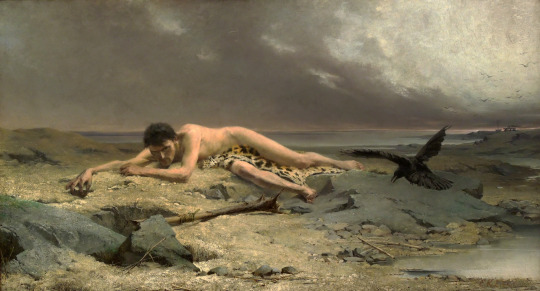
Emanuel Krescenc Liška – Cain (1885)
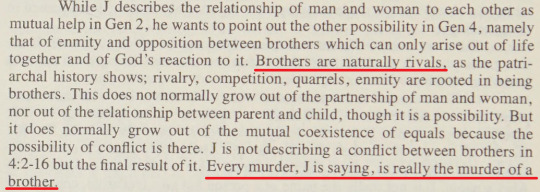
Claus Westermann, Genesis : a commentary, 1984

Arthur Segal - Kain und Abel (1918)

A Clash of Kings, Prologue - Maester Cressen

Natalie Diaz, A Brother Named Gethsemane, from When My Brother Was an Aztec

Lovis Corinth - Kain (1917)
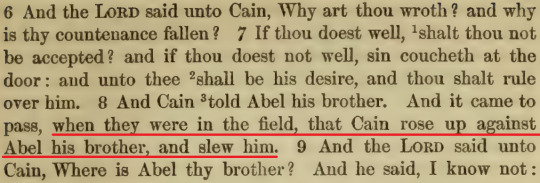
Genesis 4:6-9, translated by S. R. Driver, from The Book of Genesis, 1905

A Clash of Kings, Chapter 33 - Catelyn IV

Odilion Redon - Cain and Abel (1886)

A Clash of Kings, Chapter 33 - Catelyn IV

Genesis 4:9-14, translated by S. R. Driver, from The Book of Genesis, 1905

A Clash of Kings, Chapter 31 - Catelyn III

St. Omer, Benedictine Abbey of St. Bertin; c. 1190-1200

A Storm of Swords, Chapter 36 - Davos V

S.R. Driver, The Book of Genesis, 1905
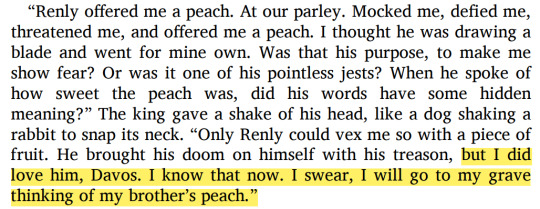
A Clash of Kings, Chapter 42 - Davos II

Lazzaro Pisani - Death of Abel (1885)

S.R. Driver, The Book of Genesis, 1905
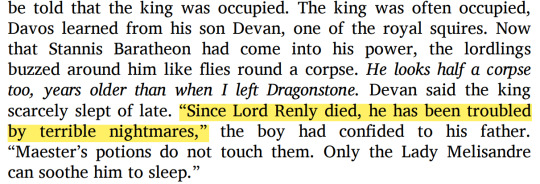
A Clash of Kings, Chapter 42 - Davos II

A Clash of Kings, Chapter 42 - Davos II

Cain and Abel - City of Zeven - 2015 (source)

Genesis 4:14-16, translated by S. R. Driver, from The Book of Genesis, 1905
#stannis baratheon#renly baratheon#house baratheon#he was my brother and i killed him#asoiaf#web weaving#valyrianscrolls#mine#fun fact i had to go to my uni library to find When My Brother Was an Aztec to get this quote. It's a lovely poem you should all read it#there is a longer section that fits the characters but it feels a little iffy taking something that is clearly personal#and apply it to fictional characters. like it has racial motifs that i don't feel comfortable saying 'oh exactly like my little characters#written by a white man!' yk?#anyway! i'm actually proud of this#i'm so normal about these biblical siblings < lying#i've said it before but this was baby's first horror story. i was obsessed with them as a kid
214 notes
·
View notes
Text
the fact that crowley stopped jim from jumping out the window the moment it was clear that jim was not just gabriel fucking with everyone is so personal to me. because:
“okay, i know you’re testing them, you said you were going to be testing them. you shouldn’t test them to destruction.”
crowley was never going to let him jump out that window, he just needed to push him far enough to be sure it wasn’t gabriel.
#there’s something there about what this represents thematically but i’m too tired to figure it out right now#so feel free to pick it apart in the notes#anyways i love crowley sm#when i heard him say that line the first time it resonated deeply with me#it finally hit me why so many biblical stories rubbed me the wrong way growing up#why the way the school system works irks me to no end#no one deserves to be tested to destruction and i will happily die on that hill#good omens#crowley#anthony j crowley#jimbriel#archangel gabriel#archangel fucking gabriel
353 notes
·
View notes